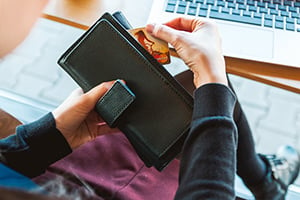 Medical advances keep us healthier. However, debilitating illnesses still affect thousands of people, and the costs of treating those illnesses cause many medical bankruptcies. With critical illness insurance, you may get the treatment you need, keep your home and other assets, and spend time with your family.
Medical advances keep us healthier. However, debilitating illnesses still affect thousands of people, and the costs of treating those illnesses cause many medical bankruptcies. With critical illness insurance, you may get the treatment you need, keep your home and other assets, and spend time with your family.
Critical Illness Insurance Coverage
Dozens of medical conditions, including injuries, disease and surgeries, are covered under critical illness insurance. Several examples include:
- Alzheimer’s disease
- Cancers
- Coma
- Heart attack
- Heart valve surgery
- Kidney failure
- Loss of sight/speech/hearing
- Multiple sclerosis
- Organ transplant
- Paraplegia
- Severe burns
- Stroke
Many critical illness insurance companies offer critical illness categories such as cancer and related conditions, organ transplants and heart-related conditions. You may purchase coverage for one category or may more to purchase a policy that covers all the categories.
Policies usually range from $10,000 to $1 million. When you do file a claim, the insurance company will pay it in a lump sum. You may then use the money for any expense you wish, including:
- Medical bills, deductibles, co-payments or diagnostic testing
- Experimental treatment
- Out-of-network doctors and hospitals
- Transportation to treatment
- Wheelchair or other medical equipment and supplies
- Home health care
- Home improvements or retrofitting
- Household living expenses
- Income replacement
- Family vacation
- Childcare
Keep in mind that critical illness insurance typically provides coverage for two to 25 years. While the insurance remains in effect as long as you pay the premiums, critical illness insurance policies include a waiting period, also known as an elimination period, during which you cannot receive benefits.
Critical Illness Insurance Costs
Your age, height, weight, family health history, nicotine use and current medical conditions affect the cost of your critical illness insurance policy. Premiums may increase when these factors change.
Also, your costs depend on the amount of coverage you buy. Choose the right amount of coverage for you when you add two years worth of mortgage or rent payments and the amount of your outstanding credit card debt.
How to Purchase Critical Illness Insurance
When you decide critical illness insurance is right for you, purchase it in several ways.
- Purchase an individual policy, which includes a medical exam.
- Add the benefit through your employee benefits package and pay the premiums through payroll deduction. You’ll either receive a certificate under your employer’s group plan or an individual workplace policy.
- Add as a supplement to your major medical health insurance policy.
- Purchase as a supplement to your life insurance policy.
With critical illness insurance, you can afford medical treatment and provide for your family. It gives you peace of mind and may be a wise investment. Give us a call to find out more.
Read more

When shopping for health insurance, you probably noticed that different plans feature different deductibles. Understand what your health insurance deductible is as you maximize your health insurance coverage.
What Is a Health Insurance Deductible?
In basic terms, a deductible is the fixed amount you must pay toward your medical bills before your insurance coverage kicks in and begins to pay your expenses in full. Your specific deductible can be as low as $250 or as high as several thousand dollars and starts over again at zero on January 1 of each year.
How Does the Deductible Work?
Here is an example of how your deductible works using a $1,000 deductible amount.
- In February, you get the flu. You pay $200, the full amount, for the doctor visit and medication. Your deductible balance now totals $800.
- In May, you sprain your ankle. You total costs are $500 for the doctor visit, x-rays and brace. Your deductible balance is now $300.
- In August, you need a physical. You pay $300 for the doctor visit and blood work. Your deductible is now met. Any further doctor visits or health care needs that are covered by your insurance will be paid 100 percent.
What are the Different Types of Deductibles?
You can check your health insurance benefits package to see exactly what deductibles you may need to pay. Some common types include:
- Annual: It’s the amount of money you’ll pay annually from January 1 to December 31.
- Per Episode: Your deductible may vary based on the type of medical care you need. As an example, doctor visits may include a $25 deductible while hospital visits require a $1,000 deductible.
- Out-Of-Network: Visit a doctor, specialist or hospital that’s not in your network, and you’ll pay higher deductibles.
- Family: If you have family coverage, your deductible may be higher than the amount paid by individuals. When your family deductible is met, your insurance will pay your health care costs.
When Won’t You Pay a Deductible?
Some insurance plans allow you to receive three types of services and not pay a deductible. They include visits to an in-network doctor for preventative care, yearly screenings or your annual flu shot. Check your benefits package to verify that you won’t owe a deductible for these services.
What Services Don’t Count Toward the Deductible?
Even though you haven’t met your deductible, there are some health services you may need or want that don’t count toward meeting your deductible. These services are the ones your insurance won’t pay. Check your policy or call your agent for clarifications.
Your health insurance deductible is an important part of your medical care. Understand it as you maximize your health care coverage and take care of your health.
Read more
Around 65 million Americans have high cholesterol, a condition that can affect anyone from young kids to senior adults. September is Cholesterol Education Month, and you can improve your health when you understand the definition of cholesterol and the best ways to prevent high cholesterol. 
What is Cholesterol?
Cholesterol circulates in your blood and resembles wax or fat. It supports metabolic processes, such as cell membrane stabilization, vitamin D formation, and steroid hormone and bile acid production. It While your body makes cholesterol naturally, it’s also found in food. If you make or consume more cholesterol than your body needs, the excess will accumulate in your arteries and narrow those passageways, which could increase your heart disease and stroke risk.
You have good cholesterol (HDL – high-density lipoprotein), bad cholesterol (LDL – low-density lipoprotein) and triglycerides. The lipoproteins carry cholesterol to and from your body’s cells.
- HDL – Removes bad cholesterol as it flows through your bloodstream.
- LDL – Becomes part of the plaque that lines your arteries.
Your cholesterol levels can depend on several factors, including a family history of heart disease, diabetes, or high blood pressure. Smoking, alcohol consumption, stress, and your weight can also affect cholesterol levels.
What are Normal Cholesterol Levels?
The ideal cholesterol level is under 170 mg/dL. Your LDL level should be under 110 mg/dL, and your HDL level should be over 35. Aim for a triglyceride level of under 150 mg/dL. While these numbers are confusing, your doctor can explain them and help you achieve healthy levels.
How do you know if you have High Cholesterol?
You might have high cholesterol and not know it. Visit your doctor for a blood test that shows your cholesterol levels. Typically, adults over the age of 20 should have their cholesterol checked every five years. High-risk children should have their cholesterol checked regularly, too.
How is High Cholesterol Treated?
Often, lifestyle changes can reduce your cholesterol levels. Your doctor may recommend exercise and dietary improvements, such as:
- Engage in two hours and 30 minutes of moderate exercise or one hour and 15 minutes of vigorous physical activity each week.
- Eat more high-fiber food, including fruits, vegetables and whole grains.
- Limit the amount of saturated fat and sugar in the foods and beverages you consume.
- Maintain a healthy weight.
- Quit smoking and lower your alcohol intake.
- Reduce stress.
Your doctor may prescribe medication, too. Statins reduce the amount of cholesterol your body makes and can lower your bad cholesterol levels.
This month, raise your cholesterol awareness levels. Visit your doctor for a cholesterol check, and discuss the steps you can take to achieve a healthy lifestyle that improves your health now and into the future
Read more
As the end of the year approaches, schedule time to review your medical needs. You may want to seek treatment that improves your health and allows you to meet your deductible.
Your health insurance deductible is the amount of money you pay before your insurance kicks in and covers your medical bills. Depending on your health insurance, you may have a low or high deductible that covers every type of medical treatment or applies to specific treatment. Call your insurance company or read your benefits paperwork to verify the deductible you owe. Your deductible will also be listed on your Explanation of Benefits (EOB).
Why Meet Your Annual Deductible
You’ll want to meet your deductible early in the year, if possible. However, it’s not too late to meet your deductible in November or December as you gain several benefits.
First, you’ll maximize your insurance coverage. After you meet your deductible, your insurance benefits will cover additional medical treatment. You pay for insurance and might as well use it.
Second, postponing important medical treatment and preventative care can increase your pain, suffering and treatment expenses. You could end up needing an even more expensive operation or extra therapy and other treatment in the future because you don’t prioritize your health now.
Finally, your deductible may rise if you switch insurance policies in January. In this case, your medical expenses will increase, so utilize your benefits and save money before your coverage switches.
How to Meet Your Deductible
Consider these ways to meet your deductible before the end of the year.
- Order a 90-day supply of your prescription medicine.
Spend a bit of extra money now to meet your deductible and ensure you have enough medication to start the new year off right.
- See an out-of-network doctor.
Now’s the time to get a second opinion or see a specialist that’s not covered in your insurance network. You’ll pay the total cost of the visit out-of-pocket, but it generally counts toward your deductible. Then, the next step in your treatment could be covered fully by your insurance.
- Pursue alternative treatment.
Visit a chiropractor, acupuncturist or other professional that provides alternative treatment for your health concerns. This specialist can help you discover your optimal health and reach your deductible.
- Get your eyes examined.
If your health insurance covers eye exams, visit the optometrist. Invest in your eye health, and purchase the new glasses or contact lenses you need.
You will save money and protect your health when you meet your annual deductible before December 31. For more information on your deductible or health benefits, reach out to your insurance agent.
Read more

With more people working remotely and spending the entire day looking at computers and phones, they are at risk for eyestrain.
We recommend that they follow these basic precautions.
- Look away from the monitor for 30 seconds, every 15 or 20 minutes. Look at or scan things at least 20 feet away to allow your eyes to focus in a rest position.
- Reposition the monitor 20” to 26” from your eyes (roughly the distance from your eyes to the end of your index finger with arm outstretched). Otherwise, you’ll be forced to sit or lean too close to the screen, or sit too far away. If your eyeglass prescription doesn’t allow clear vision at the 20” to 26” range, get it adjusted.
- Reset monitor height so that the top edge is even with your view when looking straight ahead. Then tilt the screen upward so that you’re not looking at the image at an angle. The optimal screen position is 10 to 20 degrees below eye level.
- Reset the monitor screen resolution, the Internet browser text size, and the zoom and font default in the operating system and in software applications so that text is easy to read. Start with a screen resolution of 800×600 for older CRT monitors and 1024×768 or higher for LCD (flat screen) monitors. Set the monitor refresh rate at or above 75 hertz (Hz) on older CRT models. Refresh rate is irrelevant for LCD monitors and is factory set, usually 60 Hz.
- Blink often (put a sticky note on your monitor!). The average blink rate is 22 times per minute. The rate goes down to seven per minute when looking at a monitor – which causes the eye lens to dry out. If you can’t get into the habit of blinking more often, use an eye moistener (saline solution).
- Relax your eye muscles. Put the palm of your hands over your eyes for a minute or so, once every half hour. This warms the muscles around the eyes, relaxing them.
- Minimize glare. Make sure the background light level around the monitor is about the same as the screen light level. Minimize direct sunlight or bright lights in front of the monitor or directly behind it.
- Adjust the contrast and brightness to levels you use when reading a book comfortably. A bright screen causes eyestrain.
- Use a paper holder to hold documents. Put the document at the same level as the monitor, or attach it to the monitor. This prevents repetitive neck and eye movement from paper to screen.
Read more
 Happy Father’s Day! What do you most appreciate about being a dad? With Father’s Day approaching, there’s no better time than today to protect your health. Learn about the top health risks men face and ways to combat these risks so that you can enjoy many more years with your children.
Happy Father’s Day! What do you most appreciate about being a dad? With Father’s Day approaching, there’s no better time than today to protect your health. Learn about the top health risks men face and ways to combat these risks so that you can enjoy many more years with your children.
1. Heart Disease
The top killer of men, heart disease, stroke and peripheral vascular disease are preventable. However, you will need to address the leading causes of heart disease. Do that when you stop smoking, lower your blood pressure, reduce your bad cholesterol levels and get your diabetes under control. An exercise regimen and healthy diet also help.
2. Lung Cancer
The top cancer among men is also the most preventable. Because smoking is the cause of 90 percent of lung cancer cases, talk with your health insurance company about available cessation programs and tools that assist you in getting healthy today.
3. Prostate Cancer
The second-leading cancer in men, prostate cancer can be prevented when men undergo an annual prostate-specific antigen (PSA) blood test and rectal exam. These tests should begin by age 50 or sooner if this cancer runs in your family or if you eat a high-fat diet.
4. Diabetes
If diabetes isn’t controlled, you could contract vascular disease, which leads to heart attacks, amputations, blindness, kidney failure and nerve damage. Medical treatment, a balanced diet, routine exercise and an active lifestyle can help you prevent or control diabetes.
5. Suicide
Four times as many men than women commit suicide. Men are also more likely than women to resist treatment for depression, frustration and other challenges. Asking for help is a sign of strength and can help you cope with life before you feel self-hated or a desire to commit suicide.
As a dad, focus on your health this Father’s Day. Schedule a physical exam with your primary care physician, and commit to living a healthier lifestyle. Your children will thank you.
Read more
 Medical advances keep us healthier. However, debilitating illnesses still affect thousands of people, and the costs of treating those illnesses cause many medical bankruptcies. With critical illness insurance, you may get the treatment you need, keep your home and other assets, and spend time with your family.
Medical advances keep us healthier. However, debilitating illnesses still affect thousands of people, and the costs of treating those illnesses cause many medical bankruptcies. With critical illness insurance, you may get the treatment you need, keep your home and other assets, and spend time with your family.




 Happy Father’s Day! What do you most appreciate about being a dad? With Father’s Day approaching, there’s no better time than today to protect your health. Learn about the top health risks men face and ways to combat these risks so that you can enjoy many more years with your children.
Happy Father’s Day! What do you most appreciate about being a dad? With Father’s Day approaching, there’s no better time than today to protect your health. Learn about the top health risks men face and ways to combat these risks so that you can enjoy many more years with your children.